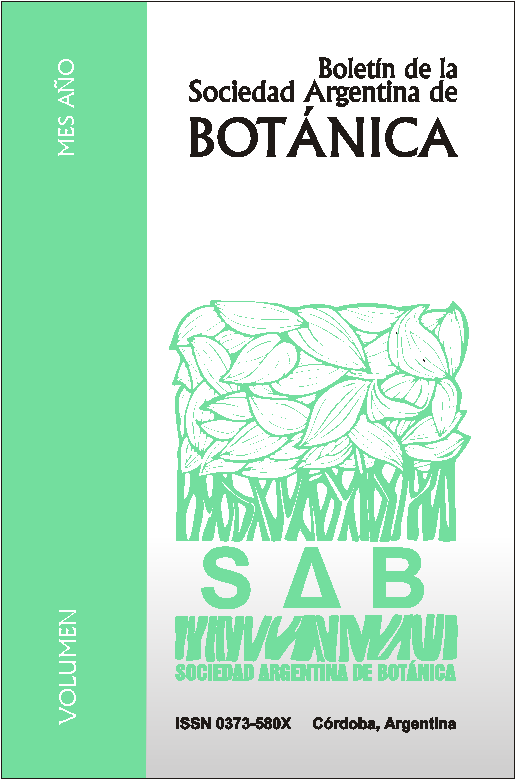Identification of woody Leguminosae-Caesalpinioideae of Paranaense forest (Misiones, Argentina) using vegetative characters.
DOI:
https://doi.org/10.31055/1851.2372.v52.n3.18035Keywords:
Distribution, habitat, herbarium specimen, identification key, morphology, native taxa, phenologyAbstract
Identification of woody Leguminosae-Caesalpinioideae of Paranaense forest (Misiones, Argentina) using vegetative characters. In this study, I explored the diversity of vegetative morphological traits of native taxa of Leguminosae-Caesalpinioideae (in the traditional circumscription) from Misiones Province of Argentina, in order to facilitate the identification of genera, species, subspecies, and varieties in the absence of flowers and fruits. Herbarium specimens from the 15 species of shrubs - trees and lianas of Caesalpinioideae belonging to 10 genera present in Misiones were studied. The analyzed traits were: life form, phyllotaxis, stem, leaf, stipules, glands and extrafloral nectaries, type of venation, pubescence, and buds. As a result, an identification key to all taxa studied and descriptions of vegetative characters of all the taxa are presented. A discussion of the diversity observed in vegetative characters is also added, as well as observations about distribution, habitat, and phenology. In addition, a vegetative key to subfamilies of shrubs-trees and lianas of Leguminosae of the Paranaense forests of Misiones is provided to facilitate identification of the Caesalpinioideae. In summary, these keys will be crucial for an accurate identification of Caesalpinioideae subfamily and their species, in seasons when flowers and fruits are absent.Downloads
Downloads
Published
How to Cite
Issue
Section
License
Provides immediate and free OPEN ACCESS to its content under the principle of making research freely available to the public, which fosters a greater exchange of global knowledge, allowing authors to maintain their copyright without restrictions.
Material published in Bol. Soc. Argent. Bot. is distributed under a Creative Commons Attribution-NonCommercial-ShareAlike 4.0 International license.









